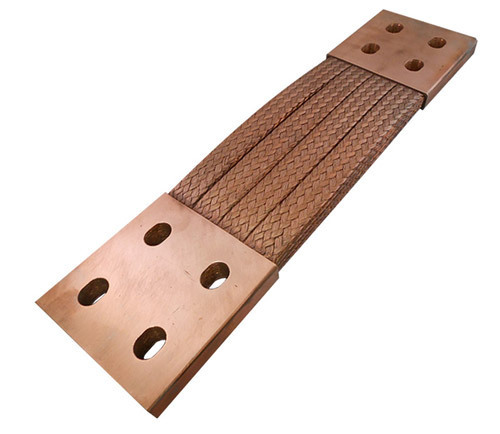In the world of precision engineering and automation, motion control systems play a crucial role in ensuring smooth, accurate, and efficient operations. At the heart of these systems lie components that often go unnoticed but are fundamental to their performance: copper flexible connectors. This article explores why these connectors, often crafted from copper foil, are the go-to choice for engineers and designers in the motion control industry.
The Unique Properties of Copper Flexible Connectors
Unmatched Conductivity
Copper stands out as one of the most conductive metals available, second only to silver. Copper flexible connectors leverage this property to ensure efficient power transmission and signal integrity in motion control systems. This high conductivity minimizes power loss and maintains the accuracy of control signals, which is crucial in precision applications.
Flexibility Meets Durability
The term “flexible” in copper flexible connectors isn’t just a buzzword. These connectors, often made from thin copper foil, offer remarkable flexibility without compromising on strength. This unique combination allows them to withstand the constant movement and vibrations typical in motion control systems while maintaining reliable electrical connections.
Advantages in Motion Control Applications
Vibration Resistance
Motion control systems often operate in environments with significant vibration. Rigid connectors can fail under these conditions, leading to system downtime and potential safety hazards. Copper wire absorb vibrations, reducing stress on connection points and ensuring consistent performance even in demanding environments.
Space-Saving Design
In the world of motion control, space is often at a premium. Engineers must pack complex systems into increasingly compact designs. Copper foil connectors offer a space-saving solution. Their thin profile and flexibility allow them to be routed through tight spaces and around obstacles, enabling more compact and efficient system designs.
Thermal Management
Heat dissipation is a critical concern in motion control systems, where components often operate at high temperatures. Copper’s excellent thermal conductivity makes copper flexible connectors an ideal choice for managing heat. They can help distribute heat more evenly across the system, preventing hotspots and extending the lifespan of sensitive components.
Enhancing System Reliability
Fatigue Resistance
One of the primary challenges in motion control systems is the repeated stress placed on components. Copper flexible connectors excel in this area, offering superior fatigue resistance compared to rigid alternatives. This property ensures that the electrical connections remain stable over time, even in systems that undergo frequent movement or cycling.
Corrosion Resistance
Many motion control systems operate in harsh environments where corrosion can be a significant issue. Copper naturally forms a protective patina when exposed to air, providing a degree of corrosion resistance. Additionally, many copper flexible connectors come with protective coatings that further enhance their corrosion resistance, ensuring long-term reliability.
Cost-Effectiveness and Sustainability
Long-Term Value
While the initial cost of copper flexible connectors might be higher than some alternatives, their durability and performance characteristics offer significant long-term value. The reduced need for maintenance and replacement translates to lower total cost of ownership for motion control systems.
Recyclability
In an era where sustainability is increasingly important, the recyclability of copper is a significant advantage. Copper flexible connectors can be easily recycled at the end of their lifecycle, aligning with environmentally conscious design principles and potentially reducing the overall environmental impact of motion control systems.
Implementation Considerations
Custom Design Options
One of the strengths of copper foil connectors is their adaptability. Manufacturers can create custom designs to meet specific application requirements, whether it’s a unique shape to fit a particular space or specific electrical characteristics to match system needs.
Integration with Other Components
When implementing copper flexible connectors in motion control systems, engineers must consider how they integrate with other components. Proper design ensures that these connectors complement rather than complicate the overall system architecture.
Conclusion: The Future of Motion Control Connectivity
As motion control systems continue to evolve, becoming more precise and compact, the role of copper flexible connectors is likely to grow. Their unique combination of flexibility, conductivity, and durability makes them an ideal choice for engineers looking to push the boundaries of what’s possible in motion control.
By embracing copper flexible connectors, designers can create motion control systems that are not only more efficient and reliable but also more adaptable to the challenges of tomorrow’s automation landscape. As we move towards more advanced and demanding applications, these unassuming components will continue to play a crucial role in driving innovation and performance in the world of motion control.
